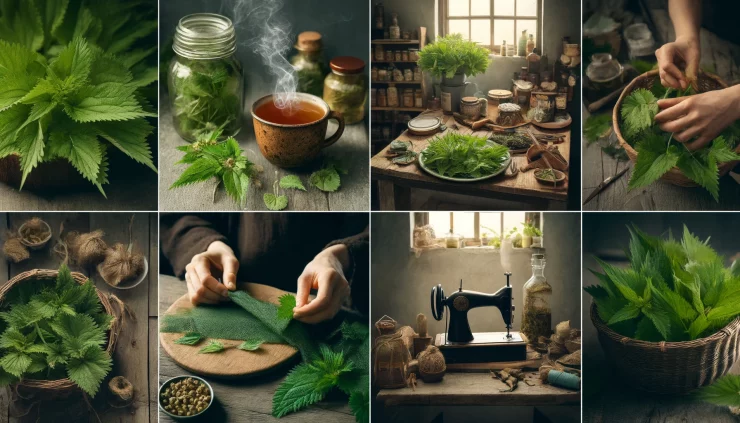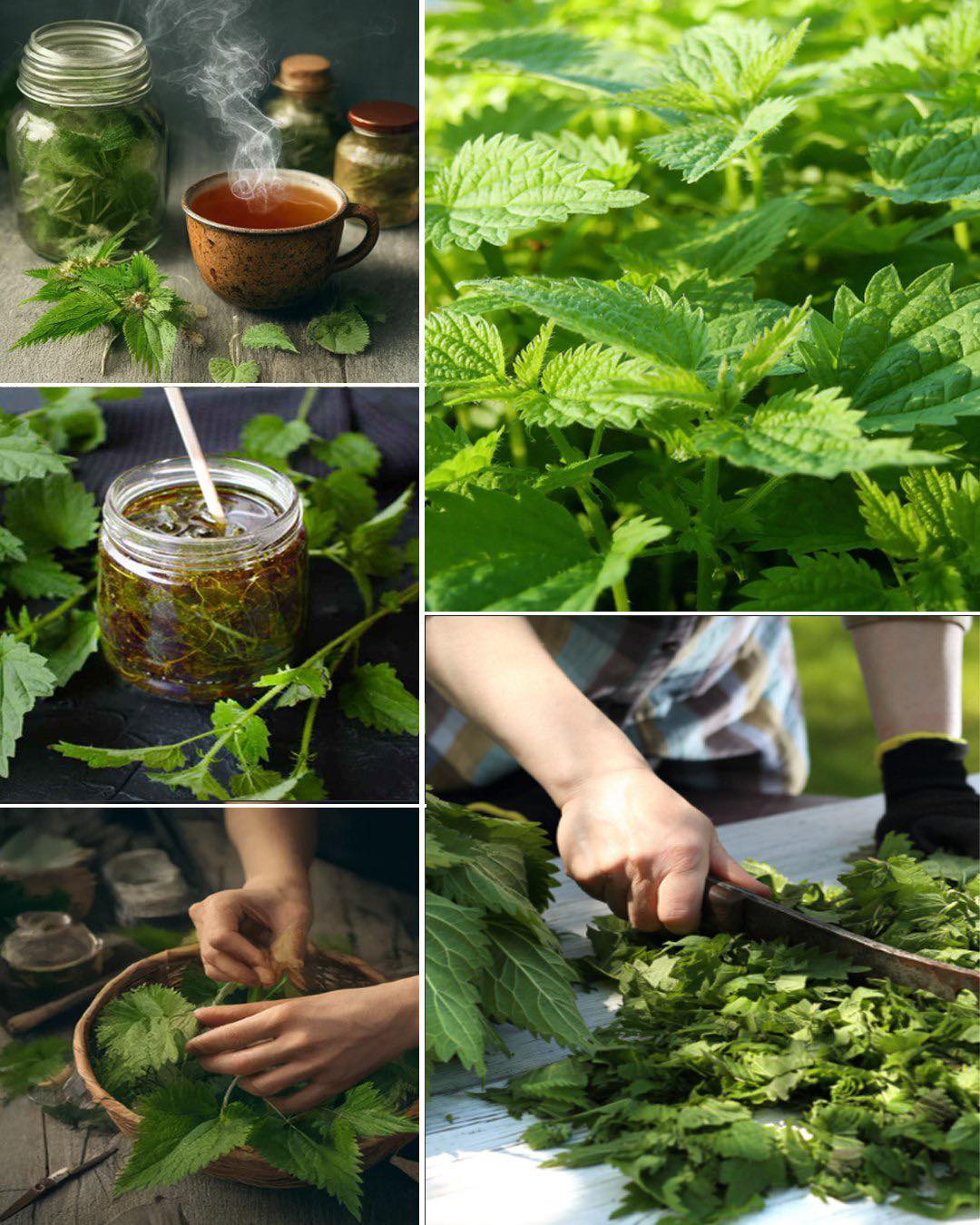Stinging nettles (Urtica dioica) may seem like an unwelcome nuisance due to their ability to cause skin irritation upon contact, but beneath their prickly exterior lies a powerhouse of benefits for human health and well-being. From culinary uses to medicinal properties, stinging nettles offer a diverse array of applications that can positively impact various aspects of our lives. Let’s explore seven uses of stinging nettles and their benefits for human life.

- Culinary Delights
Despite their sting, stinging nettles are edible and can be transformed into delicious culinary creations. Nettles can be cooked and used in recipes much like spinach or other leafy greens. They add a unique flavor profile to soups, stews, omelets, and pasta dishes, providing a nutritious boost to any meal.
- Nutrient-Rich Superfood
Stinging nettles are packed with essential nutrients, including vitamins A, C, and K, as well as minerals like calcium, magnesium, and iron. Incorporating nettles into your diet can help increase your intake of these vital nutrients, supporting overall health and vitality.

- Herbal Medicine
Stinging nettles have a long history of use in herbal medicine for their numerous health benefits. From relieving seasonal allergies to reducing inflammation and supporting urinary tract health, nettles are a versatile herbal remedy. Nettle tea, tinctures, and supplements are commonly used to harness their medicinal properties.
- Joint and Muscle Relief
Nettles possess anti-inflammatory properties that make them effective in alleviating joint pain and muscle soreness. Applying a nettle-infused topical cream or oil to affected areas can provide soothing relief and promote faster recovery from injuries or overexertion.
- Hair and Skin Care
Nettle extracts are popular ingredients in hair and skin care products due to their nourishing and revitalizing properties. Nettle-infused shampoos and conditioners can help strengthen hair and promote healthy growth, while nettle-based creams and lotions can improve skin tone, texture, and overall appearance.
- Sustainable Textiles
Nettle fibers have been used for centuries to produce durable textiles and fabrics. Nettle-based fabrics are eco-friendly alternatives to conventional materials, as nettles require fewer pesticides and fertilizers to grow and thrive. Nettle textiles are known for their strength, breathability, and versatility, making them ideal for a wide range of clothing and household items.
- Environmental Benefits
Stinging nettles play a crucial role in maintaining ecosystem health and biodiversity. They provide food and habitat for various insects, birds, and small mammals, contributing to the balance of local ecosystems. Additionally, nettles can help improve soil quality and prevent erosion, making them valuable allies in sustainable agriculture and land stewardship efforts.
Stinging nettles are much more than just pesky weeds—they are invaluable resources with numerous uses and benefits for human life. Whether consumed as a nutritious food, utilized as a healing herbal remedy, or incorporated into sustainable products, stinging nettles have the potential to enhance our health, well-being, and environment in diverse and meaningful ways.
News
JJ Redick reacts to Luka Doncic trade for Anthony Davis
In one of the most jaw-dropping moves of the season, the NBA landscape was rocked by the blockbuster trade involving Luka Dončić and Anthony Davis—a swap that has sent ripples of excitement, disbelief, and heated discussion through the league. Among…
Anthony Davis FULL reaction to trade to Mavericks for Luka Doncic
In a blockbuster move that sent shockwaves through the NBA and left fans reeling, Anthony Davis has been traded to the Dallas Mavericks in exchange for Luka Dončić. In the immediate aftermath of the news, Davis took to the media…
Shaq reacts to Dallas Mavericks wanting Kevin Durant after Luka-AD trade 👀
In the constantly shifting world of the NBA, trade rumors and blockbuster moves are a regular part of the season’s drama. The latest twist has fans buzzing: the Dallas Mavericks have reportedly set their sights on acquiring Kevin Durant in…
Donovan Mitchell FILTHY poster dunk on Kristaps Porzingis 😳
In a game filled with high-intensity moments and jaw-dropping highlights, one play in particular has left fans and analysts buzzing about Donovan Mitchell’s latest display of athleticism. Early in the contest, with the atmosphere already charged by an evenly matched…
Joel Embiid hits go-ahead bucket vs Mavs then chats with Anthony Davis after game
In one of the most thrilling contests of the season, Joel Embiid delivered a clutch performance against the Dallas Mavericks, punctuating the game with a go-ahead bucket that sent the home crowd into a frenzy. The atmosphere in the arena…
D’Angelo Russell game winner as Nets hit two 3’s in 3 seconds to win vs Rockets 😱
In one of the most electrifying moments in recent NBA history, D’Angelo Russell delivered an unforgettable game-winner that left fans and commentators in complete awe. With the Brooklyn Nets locked in a tense battle against the Houston Rockets, the outcome…
End of content
No more pages to load











